1. Drive-Thru Everything

Drive-thru culture in the U.S. goes way beyond fast food—there are drive-thru pharmacies, banks, liquor stores, and even wedding chapels. It’s all about convenience and car culture, which is deeply rooted in American life, according to Christine Zulkosky from The Food Institute. While other countries may have a McDonald’s drive-thru here and there, the sheer volume and variety of drive-thru services in the U.S. is unmatched. Americans barely bat an eye at never leaving their car for errands.
In Europe or Asia, this kind of service is rare and often viewed as excessive or unnecessary. Dense cities and public transportation make drive-thrus inconvenient or even impossible. But in suburban and rural America, where cars are king, drive-thrus just make life smoother. It’s something many don’t realize is uniquely American until they travel.
2. Free Public Restrooms (Everywhere)
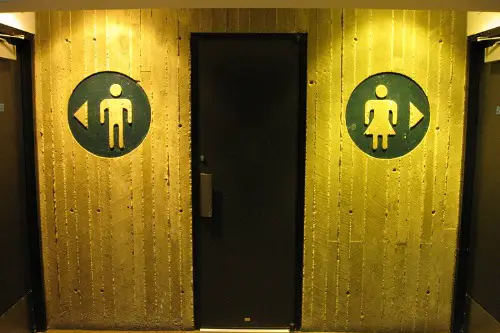
In most of the U.S., you can find a public restroom in a gas station, fast food joint, or big-box store without paying a dime or even buying something. That’s not the case in much of Europe or Asia, where using a public toilet often costs money—sometimes coins, sometimes a few bucks. Americans are used to popping into a Starbucks or a Target just for a bathroom break, and that kind of access is pretty rare globally. It’s something you don’t notice until you travel and find yourself scrambling for change in a German train station.
Other countries often prioritize cleanliness and maintenance through these fees, so the trade-off is cleaner facilities. But in the U.S., free restrooms are almost a public expectation, and refusing someone bathroom access can even spark outrage. This has become so normalized that many Americans don’t even realize it’s a uniquely American thing. While not every public bathroom in the States is pristine, as Elizabeth Yuko from Bloomberg explains, the sheer access is still surprisingly rare elsewhere.
3. Free Water at Restaurants

If you sit down at a restaurant in the U.S., the server will probably bring you a glass of ice water without you even asking, according to Darron Cardosa from Food & Wine. That’s not standard practice in much of the world. In places like Italy or Japan, water isn’t always complimentary—and it might come in a bottle, which you’ll pay for. Americans don’t just expect free water; they expect it refilled constantly and usually with ice.
The cultural assumption here is about hospitality—water is a basic right, not a commodity. But in many other countries, drinking bottled water is tied to safety concerns or simply tradition. Offering free water, especially iced, is viewed as unnecessary or even strange in some places. Still, in the U.S., it’s almost unheard of to dine out without a glass of water making its way to your table.
4. Giant Portions

You know the drill: you order a meal at a diner, and it looks like it could feed a small family. American portion sizes are famously large, especially compared to Europe or Asia, according to Joe Avella from Business Insider. From supersized sodas to massive entrees, the default in the U.S. tends to be “more is better.” For many Americans, leftovers are just part of the plan.
In many countries, the portions are more modest and more aligned with actual hunger levels. American restaurants also often offer free refills, something unheard of in most places. The large portions reflect both consumer expectations and the economics of the food industry—more bang for your buck. But outside the U.S., it can seem excessive or even overwhelming.
5. Air Conditioning Everywhere
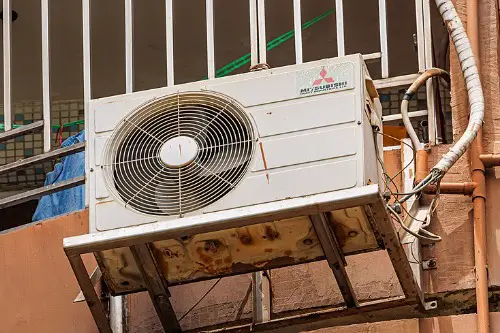
From homes to offices to grocery stores, air conditioning is a staple in American life. Even in places with relatively mild climates, A/C is often running full blast in the summer. While A/C exists elsewhere, it’s not nearly as widespread or considered essential in many parts of the world. In Europe, for example, it’s not uncommon for homes and even hotels to go without it entirely.
Americans often don’t realize how rare this is until they travel and spend a hot night sweating in a non-air-conditioned room. Energy costs, climate, and building design all play a role in the A/C gap. But in the U.S., being too hot indoors is treated as unacceptable. It’s not just about comfort—it’s about control over your environment, and most Americans wouldn’t think twice about it.
6. Tipping Culture

In the U.S., tipping is an expected part of dining out—and not just for restaurants. You’re often tipping bartenders, hair stylists, taxi drivers, and more, with 15–25% being standard in many situations, according to Arwa Mahdawi from The Guardian. In other countries, tipping is either minimal or already included in the bill through service charges. Americans grow up learning this system, but it’s confusing and even frustrating for visitors.
The reason for this is that in many U.S. service jobs, especially in restaurants, the base wage is very low and tips make up the bulk of the income. In contrast, countries like Australia or Japan pay service workers a living wage, making tips unnecessary or even rude. For Americans, tipping is second nature, but many don’t realize how unique—and controversial—it really is. It’s a custom that speaks volumes about labor and expectations in the U.S.
7. College Sports Obsession
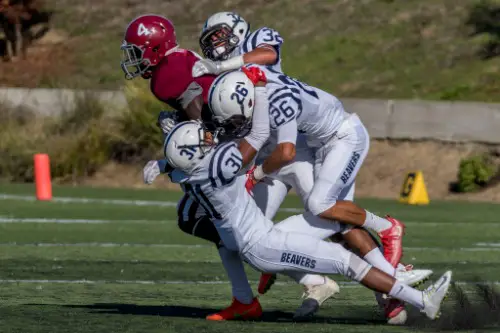
Americans take college sports seriously—sometimes even more seriously than professional leagues. Stadiums for college football can hold over 100,000 fans, and entire towns shut down on game day. There are major TV deals, student-athlete endorsements, and endless media coverage. This kind of passion for student athletics is pretty much unheard of anywhere else.
In other countries, college is mostly about academics, and sports are a side note, if they exist at all. Most professional athletes come up through club systems, not universities. The idea that a college team would have national recognition—or that students would get full scholarships for athletics—seems bizarre elsewhere. But in the U.S., it’s not just accepted; it’s a way of life.
8. Endless Ice

Whether it’s your soda at a fast food joint or water at a sit-down restaurant, Americans expect ice—and lots of it. In many other parts of the world, drinks are served either room temperature or with just a couple of small cubes. Americans love their drinks cold, and the ice machine is a standard fixture in hotels, homes, and convenience stores. It’s so normal that going without ice feels like something is missing.
The preference for iced drinks is often tied to the abundance of refrigeration and access to clean water. In some countries, ice is avoided due to concerns about water safety or simply a cultural preference for warmer beverages. But in the U.S., cold drinks are the standard, even in the dead of winter. Ice is expected, and its absence is immediately noticeable to an American traveler.
9. 24-Hour Everything
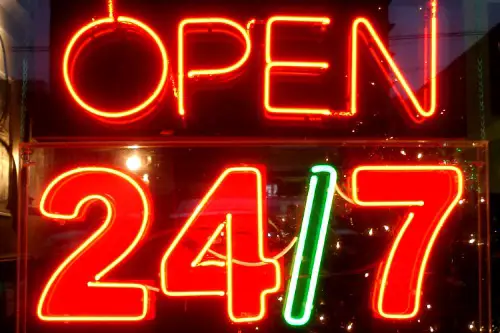
Need a snack at 2 a.m.? In many parts of the U.S., that’s no problem. 24-hour convenience stores, pharmacies, diners, and even gyms are a regular part of American life, especially in cities and suburbs. The idea that you can get almost anything, anytime, is deeply ingrained.
In much of the world, this level of round-the-clock service doesn’t exist. Stores close early, and Sundays or holidays can mean near-total shutdowns. Americans often don’t realize how unique this constant access is until they’re standing outside a shuttered store in another country, shocked that it’s closed. Convenience is king in the U.S., and people are used to life on demand.
10. Credit Score Obsession

In the U.S., your credit score isn’t just important—it’s practically your financial identity. It determines whether you can get a loan, rent an apartment, or even get a job in some cases. While credit scores exist elsewhere, the U.S. system is uniquely complex and deeply integrated into everyday life. Americans often grow up hearing about FICO scores and how one late payment could tank their future.
Other countries use different systems—some based on income, others on more general financial behavior, and many don’t rely as heavily on a single number. The intense focus on credit scores in the U.S. can be overwhelming and hard to shake. It’s a uniquely American blend of bureaucracy and financial responsibility. Most people outside the U.S. don’t even think about their credit until they need a loan.
11. Peanut Butter Everywhere

Walk into any U.S. grocery store and you’ll find an entire section dedicated to peanut butter—creamy, crunchy, natural, with or without sugar. Americans love it in sandwiches, on toast, in candy, or just by the spoonful. But outside North America, peanut butter isn’t nearly as common and is sometimes considered strange or even unappetizing. Many countries don’t grow peanuts on a large scale, which limits its popularity.
In some parts of Europe or Asia, you’ll be lucky to find a small imported jar, often at a premium price. While nut spreads exist elsewhere (hello, Nutella), peanut butter doesn’t hold the same cultural weight. In the U.S., though, it’s basically a pantry essential, often one of the first “American” foods expats crave. It’s easy to forget how unusual that kind of affection for a spreadable legume product really is.
12. Flag Displays Everywhere
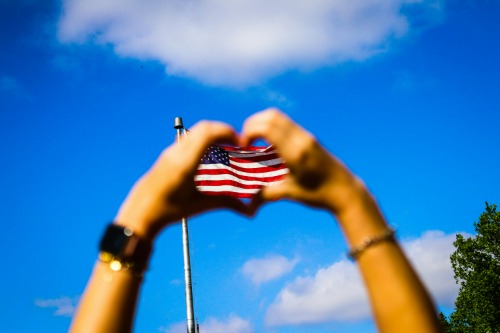
In the U.S., flags are everywhere—on porches, at schools, in front yards, and even on clothing. It’s common to see the American flag proudly flying outside homes, businesses, and government buildings. That level of visibility and patriotism is relatively unique. In many other countries, the national flag is reserved for official events or government buildings.
Americans grow up with the Pledge of Allegiance and flag-related rituals as part of daily life. That makes public displays feel natural and even expected. In other countries, such overt nationalism might be seen as excessive or even political. But in the U.S., it’s just part of the cultural backdrop.
13. Free Refills

Order a soda at most American restaurants and you’ll get free refills—no questions asked. This practice is nearly unheard of in most of the world, where you pay per glass and drink it slowly. Americans, by contrast, are used to having a server top off their drink without a word. It’s a subtle but deeply embedded part of dining out.
The economics of fountain drinks in the U.S. make this possible, since the cost is so low for restaurants. But it’s also tied to that American ideal of abundance—more is always better. In Europe or Asia, this kind of unlimited access often surprises and delights tourists. But for Americans, it’s the bare minimum.
14. Large, Single-Family Homes

Even in suburbs, American homes tend to be much larger than those in other countries. The concept of the single-family house with a yard, a driveway, and multiple bathrooms is almost standard in the U.S. In contrast, many people around the world live in apartments or more compact spaces due to land scarcity and urban planning. Americans have grown up expecting space and privacy.
This isn’t just a matter of wealth—it’s part of the American dream. Homeownership is seen as a major life goal, and sprawling subdivisions reflect that. Outside the U.S., this kind of space is a luxury, not a norm. Americans don’t often realize just how much room they really have until they’ve lived somewhere else.


